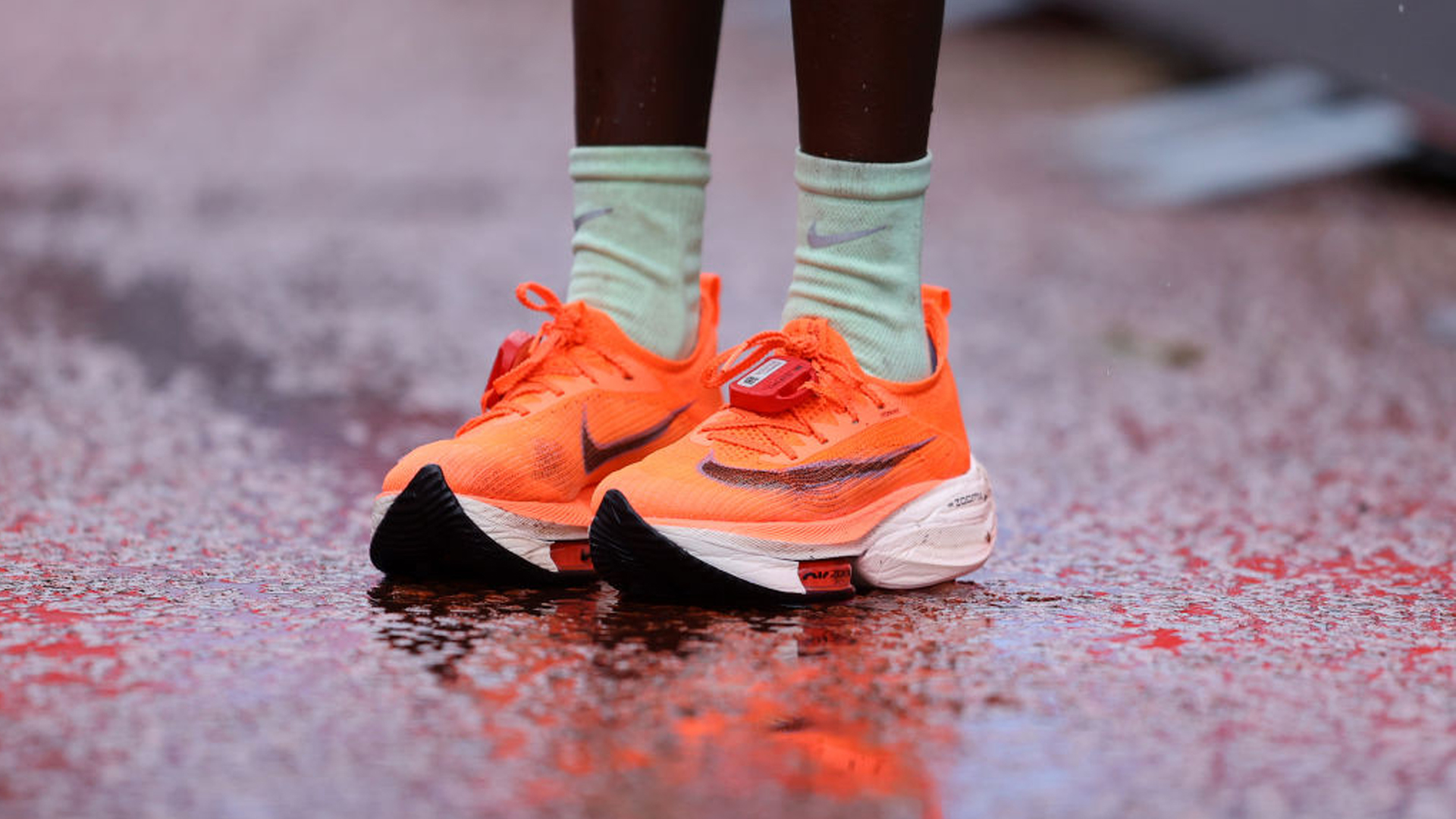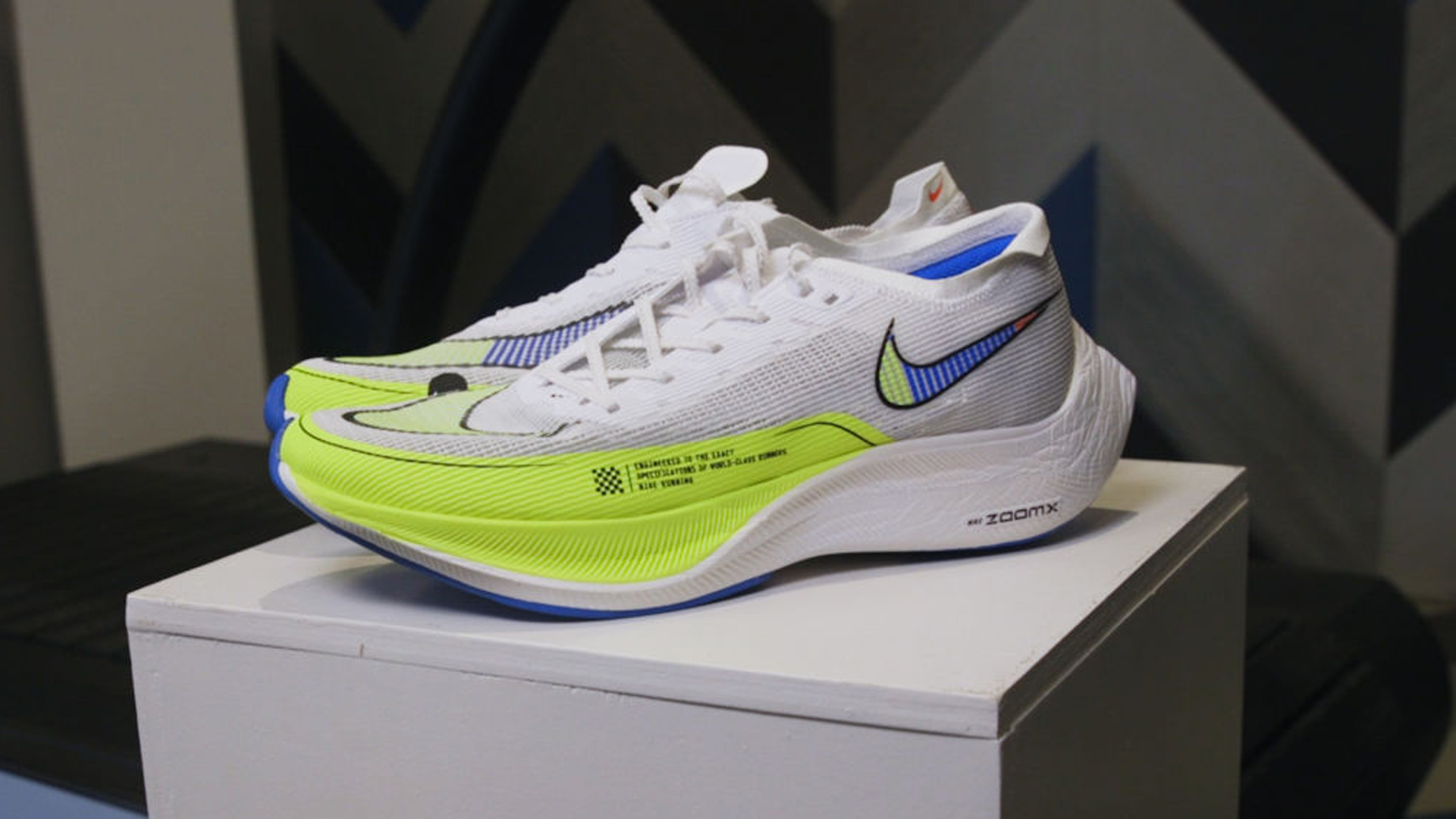Can carbon-plated running shoes cause injury?
Carbon-plated running shoes may have some performance benefits, but overusing them could lead to injuries, research suggests.

Ever since long-distance runner Eliud Kipchoge first attempted a sub two-hour marathon in 2017 in a pair of carbon-plated running shoes, the world of racing has been dominated by the "super shoe."
Carbon-plated running shoes contain a combination of Pebax foam and a carbon fiber plate. Pebax is a highly resilient, super-light foam that returns a significant proportion of energy, giving a bouncing feeling as someone runs. The plate also has a spring function, which was initially thought to be what caused the performance benefits of these shoes. However, a 2022 study published in the Journal of Sport and Health Science concluded that the carbon plate alone has a negligible impact. Instead, the authors suggested that the combination of the plate and foam might be the key.
Research has shown that the Nike Vaporfly, the original carbon-plated shoe, lowers running energy costs by 4% on average, which can knock several minutes off a marathon time. A 2022 small-scale study in the journal Footwear Science looked at a number of different carbon-plated shoes and found similar gains in terms of performance compared with non carbon-plated running shoes,
But while there is evidence that these shoes make people run faster, there’s growing concern that they may cause injury if they are the only shoe a runner wears. Anecdotal evidence from elite and recreational runners suggests the shoes may cause instability issues due to the high stack of the shoe — the amount of shoe material between a person’s foot and the ground — as well as muscle pain in the calves and knees. New research suggests that the shoes may cause injury in the feet too.
- Related: Best running shoes for supination
Carbon-plated running shoes and injury
Sports scientists are beginning to understand how carbon-plated shoes might impact biomechanics.
Runners move differently in carbon-plated shoes. This is for a number of reasons, including the plate keeping the toes straight and stabilising the runner’s ankle, according to a 2022 article in the Journal of International Exercise Science. However, this means runners activate different muscle groups and expose their body to different forces and load distributions. This can lead to increased delayed onset muscle soreness (DOMS) as the body adapts to the change.
Kim Hebert-Losier, a researcher in sports biomechanics at the University of Waikato in New Zealand, told Live Science that injuries in the knee, hip and back are also likely to occur in carbon-plated shoe wearers, as well as ankle sprains, due to the high stack height causing instability.
Get the world’s most fascinating discoveries delivered straight to your inbox.
There is also the risk of underuse injury, according to research in the journal Sports Medicine. This is where muscles weaken when they are not being used. Users of carbon-plated shoes had less ankle extensor movement and reduced work in the metatarsophalangeal joint in the foot, the review found. This decreased work output in the lower leg could potentially lead to atrophy of those muscle groups, Hebert-Losier said.

A 2023 study also published in Sports Medicine examined five case studies of elite athletes who picked up navicular bone stress injuries after wearing carbon-plated shoes. The navicular bone is one of the tarsal bones located on the inner side of the foot towards the ankle. All the athletes developed acute pain during or after running exclusively in carbon fiber-plated shoes.
Compared with non-carbon fiber shoes, the shoes put a different loading pressure on the foot, which in turn "puts a novel stress on the bone," said Dr. Adam Tenforde, one of the researchers, who is also director of running medicine at Spaulding Rehabilitation Hospital, part of MassGeneral Brigham in Boston, and associate professor of physical medicine and rehabilitation at Harvard Medical School.
If this injury goes unrecognized or is more advanced when discovered, it can require surgery to ensure the bone heals correctly, Tenforde told Live Science.
"Left undiagnosed, the bone can essentially die which is called avascular necrosis of the bone. It can also contribute to the development of osteoarthritis so it becomes a really critical injury to identify," he said.
But such findings should be treated with caution, said Hebert-Losier, because elite athletes with high training loads may develop a navicular bone stress injury irrespective of the shoes they wear.
"In previous studies, 64% to 70% of navicular bone stress injuries were in track and field athletes and runners,” she said. “To understand how and if carbon fiber plates are linked with injuries, prospective studies are needed that account for the multifactorial nature of injuries. How the shoes affect the navicular bone remains largely speculative, making it difficult to convincingly establish a cause – effect relationship.”
How often should runners wear carbon-plated shoes?
One thing the sports scientists Live Science spoke to agree on is that runners should gradually introduce carbon-plated shoes to their training program.
"We need to give our bodies the opportunity to adapt to this footwear,” Tenforde said. “We also need to be curious if there's pain that's developing and not going away and seeing medical providers familiar with the possible injury risks associated with running.”
Having a transitional period of wearing carbon shoes and non-carbon shoes is strongly advised, Tenforde said, such as using them for short-tempo runs before gradually building up to longer distances.
"While some individuals can adapt quickly to alterations and redistributions of loads involved with changes in footwear, others cannot and need a more gradual and prolonged transition period," Hebert-Losier said.
So rather than saving carbon-plated shoes for race day or using them for every run, it is best for a runner to mix them up with their usual shoes, to avoid being reliant on them, she said.
Lily Canter is a freelance money, health and lifestyle journalist with more than 20 years' experience. She writes about fitness for Fit+Well, Tom's Guide, T3, South China Morning Post, Runner's World and Trail Running magazine. She focuses on personal finance for Yahoo! Finance UK, Metro, The Guardian, and loveMONEY. In her spare time she is an ultra-runner, canicrosser and UK Athletics running coach. She also co-hosts the award-winning podcast Freelancing for Journalists.



